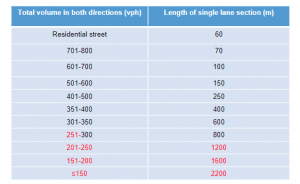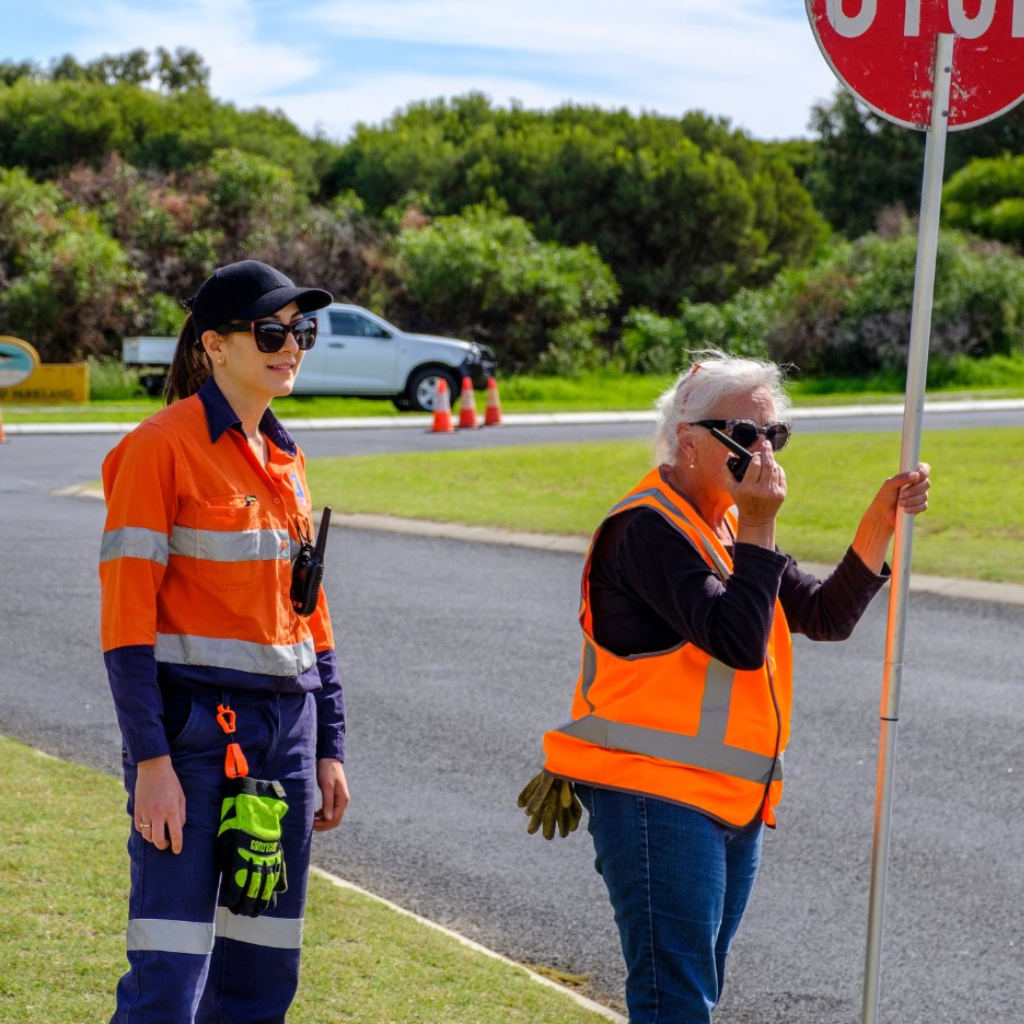Main Roads WA has released a NEW Code of Practice for Works on Roads May 2022. We’ve put together a helpful article that summarises the 6 key changes from this update.
If you and your organisation work on or near roads, then this is a must-read for you. The following key changes have been updated;
1. Shadow Vehicles
A shadow vehicle is a moving traffic management vehicle used to provide upstream protection to workers on foot or plant / equipment, either for mobile works or when setting up and closing down traffic management signs and devices.
For mobile works, AGTTM Part 4 requires a shadow vehicle to provide close protection to the rear of workers on foot. A shadow vehicle should also be considered at static worksites when workers on foot are in close proximity to traffic e.g. to protect workers within 3 m of live traffic.
The new Code of Practice will now require;
Shadow vehicles must be used to protect workers on foot (when not protected by Road Safety Barriers) in the scenarios outlined in the table below on Main Roads roads with the following traffic volumes:
- All work on roads with traffic volumes that exceed 15,000 vpd (AADT); OR
- Night works on roads that exceed 2,000 vpd (AADT)
– Scenario 1 – Activities / Works within a traffic lane (open or closed)
– Scenario 2 – Activities / Works within 2 m of the live traffic lane on roads with a permanent speed limit of 80 km/h or more
– Scenario 3 – Implementing or removing traffic management on roads with a speed limit less than 80 km/h when not in a traffic lane. (Refer to scenario 2 for speeds 80 km/h or more)
Notes:
- Refer to the Requirements for the use of TMA in WA Code of Practice for when a TMA must be used to protect workers.
- Workers on foot include traffic management workers implementing/removing traffic management
- For works at single-lane shuttle flow the shadow vehicle should be protecting workers from the direction of traffic flow in the closed lane
- A lookout person may be omitted when monitoring traffic management e.g. picking up fallen signs, based on a risk assessment when there are adequate gaps in traffic.
At static worksites using a TMA, the TMA must be used as a shadow vehicle to protect workers on foot or small plant items.
The use and location of the shadow vehicle must be outlined in the TMP and TGS, the shadow vehicle must be within a reasonable proximity to workers. This should be based on a risk assessment considering the following:
- likelihood of an errant vehicle impacting the workers
- vehicles entering from nearby intersections that could enter the closed lane
- horizontal and vertical curves near workers
- confusing roadworks layout
- road surface
- proximity of workers to the travel way
- use of a lookout person
- use of a pilot vehicle
Refer to Section 6.13 – page 55
2. Portable Traffic Control Devices (PTCDs)
AGTTM states that portable traffic control devices (PTCD) are the preferred method to control traffic. However, it is accepted that it is not practical to use PTCDs for all work types and locations and higher risk locations need to be prioritised.
PTCDs must be used as the method of traffic control, for roads with:
- a permanent speed limit of 90 km/h or more and over 2,000 vpd*; OR
- a permanent speed limit of 70 km/h or more and over 10,000 vpd*.
*refer to exceptions listed below
Works on roads outside of the above should still consider the use of PTCDs and they may still be required based on a risk assessment. Traffic management planners should also refer to contractual requirements that may require the use of PTCDs regardless of the speed and/or traffic volume.
As of 1 July, 2022 manual traffic control (i.e. with Stop-Slow bats) will no longer be permitted on Main Roads roads with the following exceptions:
- on roads with less than 300 vpd based on a risk assessment
- at permanent traffic signals based on a risk assessment
- where the total cumulative time of the stop-slow activity over a 24-hour period is 5 minutes or less based on a risk assessment
- activities 5 to 15 minutes at a single location* based on a documented risk assessment with the following:
– a site specific TMP, OR
– a TGS (within an authorised TMP) determined to be site suitable by a person with WTM/AWTM accreditation - stop slow permitted for TTM set up and pack up, e.g. holding traffic to set up the signal or implementing a lateral shift on a 2 lane 2 way road
- emergency and incident management
- in the event of failure of the PTCDs
*may be multiple work locations
Any use of PTCDs, or other traffic control, to be within an authorised TMP prepared in accordance with section 4.2.
Refer to Section 6.8.3 – Page 47
3. Shuttle Flow Distances
There are new additional shuttle flow distances. The below variation to the maximum permitted length of single lane shuttle within AGTTM Part 2 and 3 may be applied (changes in red):
Table 13: Maximum length of operation under shuttle flow
Refer to Section 6.8.6 – Page 52
4. Traffic Management Implementation, Operation & Removal Methodology
AGTTM Part 6: Field Staff – Implementation and Removal provides requirements for installing and removing TTM schemes. AGTTM indicates the preferred method for implementing or removing TTM schemes is to use the TTM vehicle to shadow the TM workers and install/remove signs and devices on one side of the road at a time:
Figure 11: TTM implementation example from AGTTM Part 6 (Figure 6.1)
Crossing the road should be avoided where possible and where it is undertaken a lookout person/spotter must be used for all activities where required in accordance with AGTTM Part 5.
WA has also implemented additional requirements on top of the AGTTM criteria for implementing, monitoring and removing temporary traffic management schemes. These additional requirements apply for high-speed multilane roads and Main Roads controlled roads.
Refer to Section 6.14 – Page 58
5. Workers on Foot Crossing High Speed Roads
Crossing the road is not permitted on any road where a Truck Mounted Attenuator is required to protect workers, see the Requirements for the use of Truck Mounted Attenuators in WA – Code of Practice.
As per section 6.13, crossing the road to implement/remove signs is not permitted on Main Roads roads with the following traffic volumes:
- All work on roads with traffic volumes that exceed 15,000 vpd (AADT); OR
- Night works on roads that exceed 2,000 vpd (AADT)
Crossing these roads is only permitted when supported by a documented risk assessment undertaken by:
- a AWTM as part of the TMP; or
- an onsite documented risk assessment undertaken by a person that holds WTM accreditation.
If a risk assessment supports crossing the road a dedicated lookout person must be used (a lookout person may be omitted when monitoring traffic management e.g. picking up fallen signs, based on a risk assessment when there are adequate gaps in traffic).
Refer to Section 6.14.2 – Page 59
6. New Speed Feedback Signs Mandated for Use Early 2023
Speed feedback signs (also referred to as speed radar signs, speed LED signs, Vehicle Activated Signs or speed radar VMS) detect vehicle speeds (using laser speed-detection equipment, for example) and either the speed or a message (e.g. SLOW DOWN) is displayed on an electronic sign.
The primary purpose is to make drivers aware of their speed and encourage them to reduce their speed through the worksite. Research indicates that these are very effective in reducing driver’s speed for short-term purposes. Speeds significantly above the posted speed limit must not be displayed on the sign, i.e. just a message, such as SLOW DOWN, should be shown.
Main Roads will look to mandate the use of these signs on Main Roads projects in early 2023, they should be considered at worksites on roads with 15,000 vpd or more with other set conditions.
Refer to Section 7.3 – Page 61
What Do I Need To Do?
As a result of the above changes, here are some recommended actions or steps to take;
- Make sure you are a subscriber to our mailing list – that way you will receive this and any future updates direct to your mailbox. To sign up click here.
- Download and read the latest Main Roads WA Code of Practice Works on Road document. Please note there are other changes not summarised in this article, therefore it is important you read the full updated document.
- Inform your organisation and co-workers about these new changes.
- Review your workplace policies, procedures and other documents that may be impacted. Schedule time to update workplace documents and convey these changes to your team.
Got Questions?
Do you have any questions and need further assistance with any part of the new Main Roads WA Code of Practice Works on Roads? Get in touch and contact us.
Do you need training?
Do you need temporary traffic management training for your team? We have a wide range of public training courses view calendar here or our team can travel to your workplace for onsite training request a quote here.




